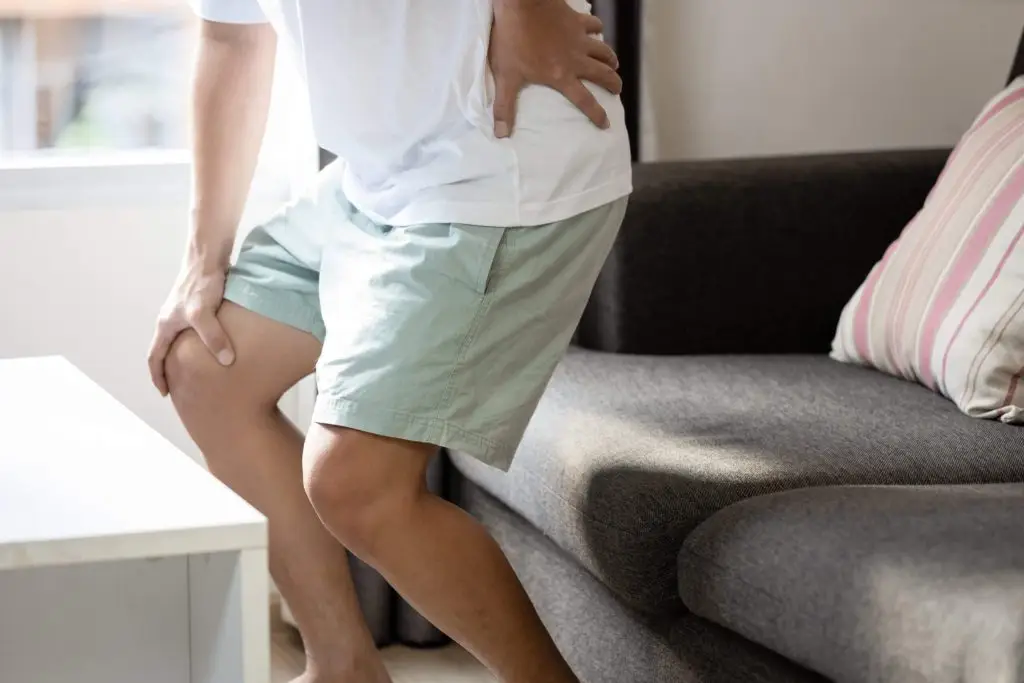Pain in your lower back, hips, or tailbone can seem minor at first, but when it persists, it can disrupt every part of your life—walking, working, and even resting. And because there are several key joints at the intersection of your lower back and hips, pinpointing the location and cause of the pain can be tricky.
For example, the sacroiliac (SI) joint that connects your hips to your spine can be the source of several different conditions that cause discomfort and pain. But due to its proximity to the hips and overlapping symptoms, hip pain and SI joint pain can often be confused.
Our physical therapists always take a complete approach to diagnosing your lower back and hip pain to ensure we target the right area with effective treatment to get you relief.
SI joint pain anatomy
To understand the difference between SI joint and hip pain, we need to know how these joints are related. The sacroiliac joint is located where your spine meets your pelvis, a few inches above the tailbone or coccyx. There are two SI joints that connect to the iliac bones of the pelvis. These joints are essential for stability and shock absorption, especially during weight-bearing activities like walking or running.
Hip joints, on the other hand, are where the femur (thighbone) connects to the pelvis at a ball-and-socket joint. They lie in front of and below the SI joint.
So although these areas are distinct, the close proximity of the SI joint to the hips often makes it challenging to determine the true origin of your pain.
Hip pain or SI joint pain?
Being able to communicate with medical professionals and others about what hurts is key to finding the right treatment. A physical therapist can guide you through specific questions to identify your pain during an evaluation, and if you have a better idea of what’s causing your pain, this process can be easier and quicker.
What does SI joint pain feel like?
People with SI joint pain often describe it as:
- Aching, sharp, or stabbing pain on one side of their lower back
- Stiffness or a burning sensation in the lower back
- Pain that radiates to the hips, buttocks, or lower back, but usually not below the knees
- Increased pain when sitting for prolonged periods, standing, or transitioning between sitting and standing
- Discomfort during certain activities, such as climbing stairs or running
What does hip joint pain feel like?
Hip joint pain, however, may be experienced as:
- Discomfort toward the front of the hips or in the groin area
- Pain that radiates to the thigh or occasionally to the knee
- Reduced range of leg motion or difficulty in movements like walking, bending, or squatting
- Clicking or popping sensations in the hip joint during movement
Common SI Joint and Hip Pain Conditions
Some health conditions and prior diagnoses can contribute to the pain you’re feeling. Possible conditions that might be affecting your SI joint include:
- Sacroiliitis (inflammation of the SI joint)
- Traumatic injuries, such as falls or car accidents
- Pregnancy-related SI joint dysfunction
- Arthritis affecting the SI joint
And similar conditions that affect the feeling of the hips include:
- Osteoarthritis or hip joint degeneration
- Labral tears (damage to the cartilage surrounding the hip socket)
- Hip bursitis (inflammation of the fluid-filled sacs cushioning the hip)
- Hip impingement or structural abnormalities
Treatments for SI joint pain
Adding to the confusion, SI joint and hip flexor pain can coexist. An inflamed or unstable SI joint may lead to overcompensation by surrounding muscles, including the hip flexors, resulting in secondary hip pain. Similarly, hip joint issues can strain the SI joint. This is what makes it valuable to talk to a medical professional for an accurate diagnosis.
The good news is that, although SI joint pain can be mistaken for hip pain, the treatments often overlap and can even benefit both conditions. Here are several effective approaches our physical therapists may recommend:
- Targeted muscle-strengthening exercises
- Ergonomic assessment
- Postural training
- Massage therapy/relaxation
SI joint pain treatment in St. Louis
If you’re experiencing persistent hip pain or SI joint pain and are struggling to find relief on your own, it’s time to take action. At Excel, we specialize in identifying the underlying causes of all types of musculoskeletal pain and providing targeted treatments to restore your mobility, comfort, and quality of life.
Take the first step by calling one of our Greater St. Louis locations or by requesting an appointment online today. We may be able to offer appointments as soon as the same or next day so you don’t have to struggle in pain for long.
